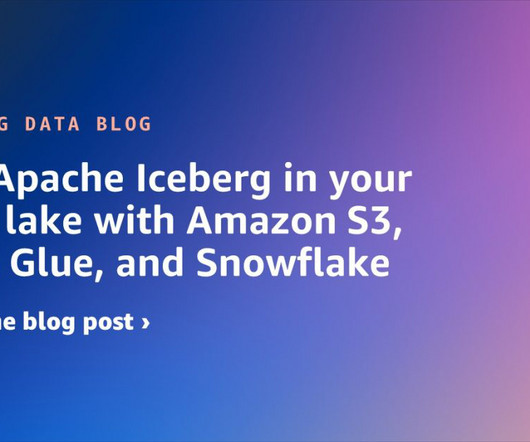Design a data mesh pattern for Amazon EMR-based data lakes using AWS Lake Formation with Hive metastore federation
AWS Big Data
JUNE 10, 2024
In this post, we delve into the key aspects of using Amazon EMR for modern data management, covering topics such as data governance, data mesh deployment, and streamlined data discovery. Organizations have multiple Hive data warehouses across EMR clusters, where the metadata gets generated.














Let's personalize your content